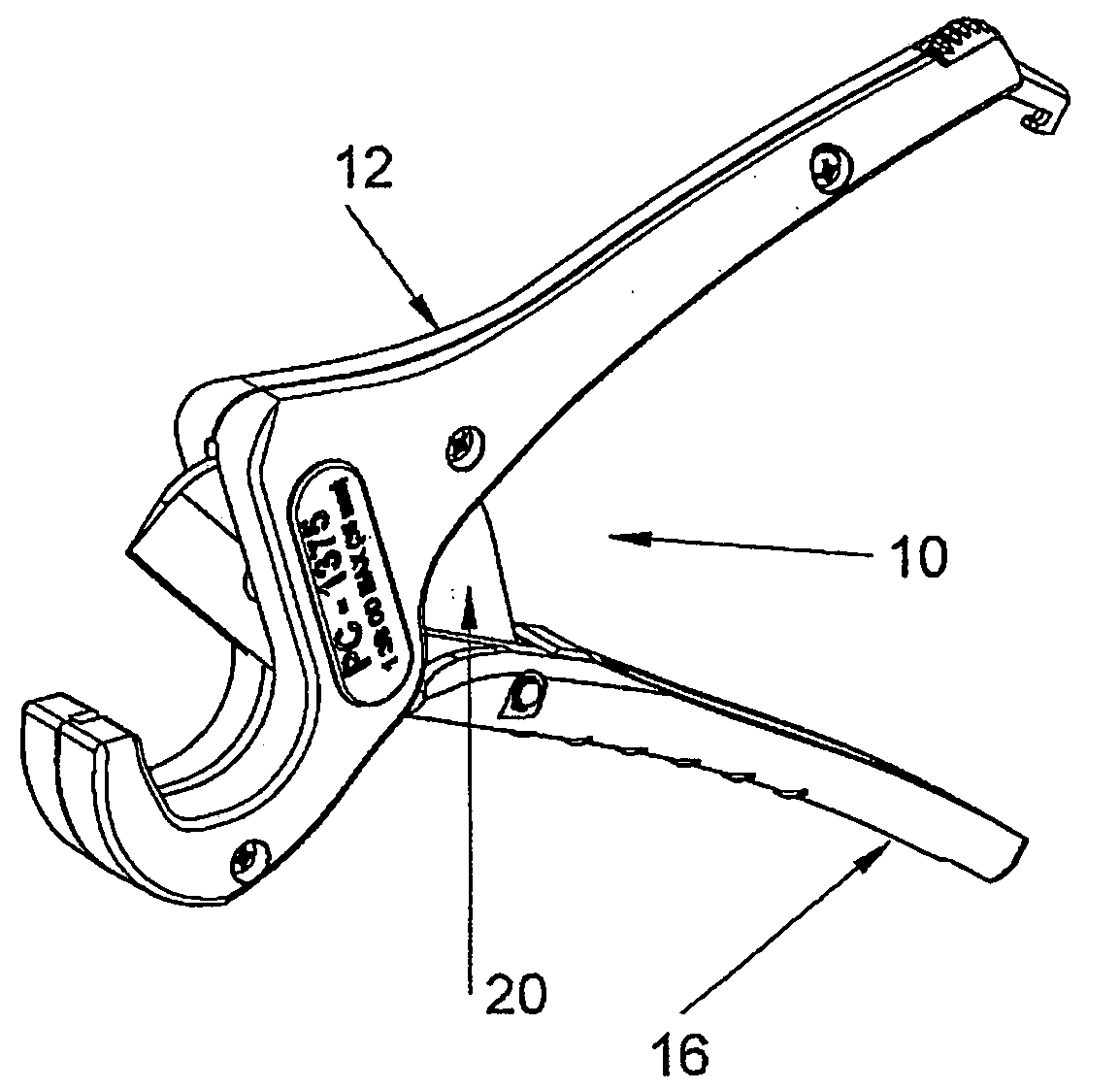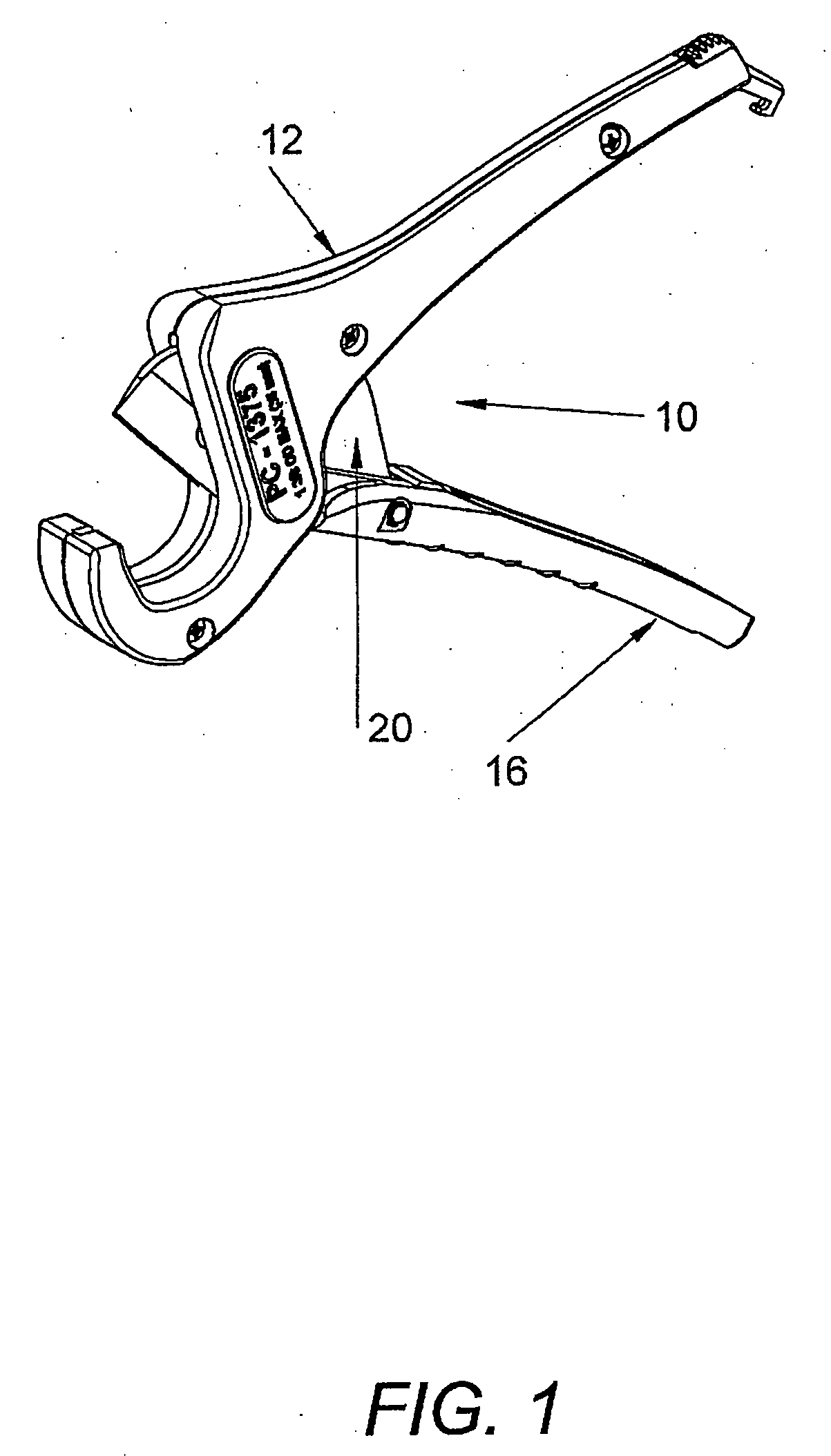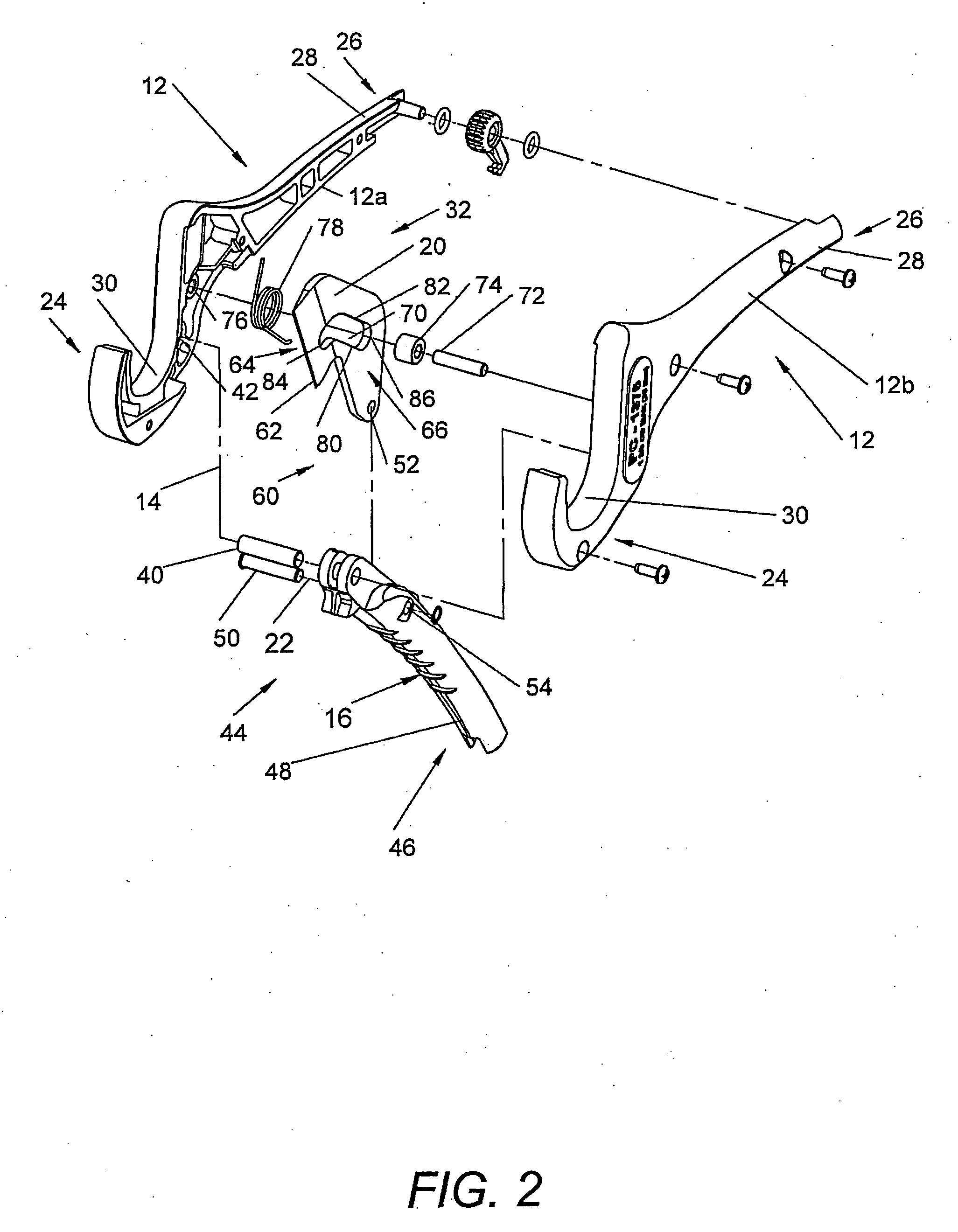Tubing cutter
a cutter and tube technology, applied in the field of tube cutters, can solve the problems of small hand span, difficult to apply the necessary closing force on the handle, and excessive effort on the part of the user, and achieve the effect of less force and longer cutting strokes
- Summary
- Abstract
- Description
- Claims
- Application Information
AI Technical Summary
Benefits of technology
Problems solved by technology
Method used
Image
Examples
Embodiment Construction
[0020]Referring now in greater detail to the drawings, wherein the showings are for the purpose of illustrating preferred embodiment of the present invention and not for the purpose of limiting the invention, FIG. 1 provides a perspective view of the subject tubing cutter apparatus 10 in a partially opened position and FIG. 2 is an exploded perspective view illustrating the various preferred components thereof and their preferred arrangement in the subject tool.
[0021]As shown in those Figures, the preferred form of the tubing cutter 10 comprises a first elongate member 12 pivotally attached at a handle axis 14 with a second elongate member 16, and a cutter blade 20 pivotally attached at a blade axis 22 with the second elongate member 16 as shown. In the preferred embodiment illustrated, the first elongate member 12 is defined by handle halves 12a and 12b, each of which has a first end 24 and an opposite second end 26. Ends 24 are provided with corresponding arcuate cradle portions 3...
PUM
| Property | Measurement | Unit |
|---|---|---|
| angle Φ2 | aaaaa | aaaaa |
| outer diameter | aaaaa | aaaaa |
| angle Φ1 | aaaaa | aaaaa |
Abstract
Description
Claims
Application Information
 Login to View More
Login to View More - R&D
- Intellectual Property
- Life Sciences
- Materials
- Tech Scout
- Unparalleled Data Quality
- Higher Quality Content
- 60% Fewer Hallucinations
Browse by: Latest US Patents, China's latest patents, Technical Efficacy Thesaurus, Application Domain, Technology Topic, Popular Technical Reports.
© 2025 PatSnap. All rights reserved.Legal|Privacy policy|Modern Slavery Act Transparency Statement|Sitemap|About US| Contact US: help@patsnap.com



